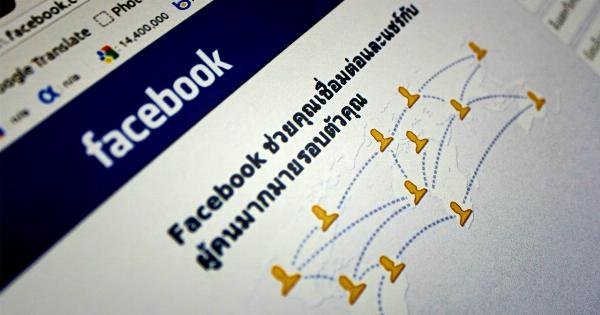In today’s digital age, the internet has become an integral part of our everyday lives. It offers a wealth of information, entertainment, and connectivity.
However, along with its numerous benefits, the internet also poses various risks, especially for children. One of the most concerning issues that has emerged in recent years is internet harassment.
What is Internet Harassment?
Internet harassment refers to the act of deliberately intimidating, tormenting, or threatening someone using online platforms.
It involves repeated hostile behaviors with the intent to harm or distress the victim emotionally, mentally, or even physically. This type of harassment can occur through various channels, such as social media platforms, messaging apps, online gaming communities, or even email.
Types of Internet Harassment
Internet harassment includes several forms that can be particularly harmful to children:.
1. Cyberbullying
Cyberbullying is one of the most prevalent forms of internet harassment among children. It involves using technology to harass, humiliate, or intimidate a person.
Cyberbullies often post hurtful comments, spread rumors, or share embarrassing photos or videos of their victims. This type of harassment can have severe psychological effects on children, leading to anxiety, depression, and even suicidal ideation.
2. Online Grooming
Online grooming occurs when an adult intentionally builds an emotional connection with a child online to exploit or abuse them.
Predators may pretend to be someone they are not, manipulating children into sharing personal information or engaging in inappropriate conversations or activities. Online grooming poses a significant risk to children’s safety, as it can lead to sexual exploitation or other forms of abuse.
3. Harassment through Sexting
Sexting involves sending sexually explicit messages, photos, or videos through electronic devices. Children who engage in sexting may become targets of harassment or blackmail by their peers or even strangers.
These incidents can cause significant emotional distress and have long-lasting consequences for the victims.
4. Identity Theft
Identity theft occurs when someone steals another person’s personal information, such as name, address, or financial details, to commit fraud or other illegal activities.
Children are particularly vulnerable to identity theft as they often have limited understanding of online privacy and may unknowingly share sensitive information.
5. Online Stalking
Online stalking involves obsessively following and monitoring someone’s online activities without their consent.
Stalkers may use various techniques to invade a person’s digital privacy, such as tracking their location, gathering personal information, or incessantly sending them unwanted messages. This constant intrusion can cause significant distress, anxiety, and fear for children.
Impact of Internet Harassment on Children
Internet harassment can have severe consequences on children’s mental health, emotional well-being, and overall development:.
1. Psychological Effects
Children who experience internet harassment often suffer from low self-esteem, increased anxiety, depression, or even post-traumatic stress disorder (PTSD).
The constant fear of being targeted or humiliated can make them withdraw from social interactions and lead to a decline in academic performance.
2. Physical Health Issues
Long-term exposure to online harassment can manifest physically, with children experiencing headaches, sleep disturbances, loss of appetite, or even psychosomatic symptoms.
The stress and anxiety caused by the harassment can affect their overall well-being and immune system.
3. Educational Implications
Children facing internet harassment often struggle academically due to the emotional toll it takes on them. Their ability to focus, concentrate, or participate in classroom activities may be significantly impaired.
This, in turn, can hinder their learning progress and future prospects.
Preventive Measures to Combat Internet Harassment
While internet harassment is a growing concern, there are several steps parents, educators, and policymakers can take to protect children:.
1. Education and Awareness
Creating awareness about internet harassment among children and their parents is crucial. Educational programs should be implemented to teach children about online safety, responsible internet use, and the potential dangers they may encounter.
2. Open Communication
Encouraging open communication between children and their parents or caregivers is vital.
Establishing a safe space where children can freely discuss their online experiences can help identify early signs of harassment and provide the necessary support.
3. Parental Controls and Monitoring
Parents should utilize parental control tools and software to monitor their children’s online activities. These tools can help filter inappropriate content, limit screen time, and track potential signs of harassment.
4. Reporting and Blocking Mechanisms
Social media platforms, gaming communities, and other online platforms should have robust reporting and blocking mechanisms to swiftly address cases of harassment.
Encouraging children to report any instances of harassment they face is crucial to ensure timely intervention.
5. Collaborative Efforts
Policymakers, internet service providers, and online platforms must collaborate to develop effective policies and guidelines to combat internet harassment.
These measures should aim to raise the standards for online platforms, enforce strict consequences for harassment, and ensure the privacy and safety of children.
Conclusion
Internet harassment is an ever-growing problem for children that requires immediate attention and action. As the digital landscape continues to evolve, children are increasingly vulnerable to various forms of online harassment.
By implementing preventive measures, increasing awareness, and fostering open communication, we can work together to create a safer online environment for children.





























